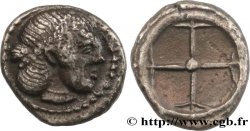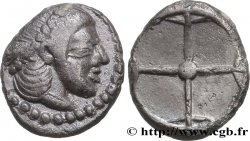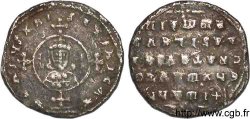v57_0030 - SICILY - SYRACUSE Tétradrachme
MONNAIES 57 (2013)
Starting price : 750.00 €
Estimate : 1 200.00 €
unsold lot
Starting price : 750.00 €
Estimate : 1 200.00 €
unsold lot
Type : Tétradrachme
Date: c. 475-470 AC.
Mint name / Town : Syracuse, Sicile
Metal : silver
Diameter : 24 mm
Orientation dies : 10 h.
Weight : 16,96 g.
Rarity : R2
Emission: groupe 3, série 8a
Coments on the condition:
Exemplaire sur un petit flan légèrement ovale, bien centré des deux côtés. Très beau style archaïsant du droit, en particulier au niveau des chevaux sur un coin légèrement mou comme sur l’ensemble des exemplaires. Joli revers bien venu à la frappe avec un début de cassure de coin perceptible. Patine grise superficielle avec des reflets dorés
Catalogue references :
Predigree :
Cet exemplaire provient du stock de Jean-Bruno Vigne et de la collection JMB
Obverse
Obverse legend : ANÉPIGRAPHE.
Obverse description : Bige au pas à droite, conduit par un aurige tenant les rênes et le kentron ; le bige est couronné par Niké volant à droite ; grènetis circulaire perlé.
Reverse
Reverse legend : R RÉTROGRADE.
Reverse description : Tête d'Aréthuse à droite, les cheveux relevés et retenus par un diadème de perles, entourée de quatre dauphins.
Reverse legend : SUR-AK-OSI-O-N
Reverse translation : (de Syracuse).
Commentary
Début de cassure de coin dans la continuité du diadème au revers. Les dauphins sont massifs. Mêmes coins que l’exemplaire de la collection Weber, n° 1568.








 Report a mistake
Report a mistake Print the page
Print the page Share my selection
Share my selection Ask a question
Ask a question Consign / sell
Consign / sell
 Full data
Full data










